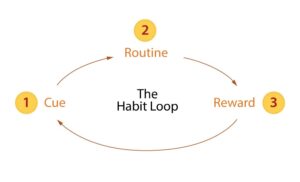How to Make New Year’s Resolutions Work
Happy New Year! That phrase always resonates with the hope of possibilities and potential of good things that could happen in the next 12 months. Last year didn’t go as expected, but this year’s going to be different. . . Or is it?
About 39 percent of us make New Year’s resolutions. The top three New Year’s resolutions for 2023 are to exercise more, eat healthier, and lose weight. In a year marked with high inflation, the resolution to save more money comes in fourth. And spending more time with family and friends rounds out the top five.
This tells me 40 percent of us want to take action in 2023 to improve our health. That’s great, but those were the same top three resolutions in 2022.

Most of us gave up hope on those 2022 resolutions by January 19. That’s what research conducted by the fitness app Strava found as they tracked the activities of over 800 million users.
The problem with most New Year’s resolutions is they’re too big and too vague. They usually involve changes that disrupt our normal lifestyles too much. Socrates once said, “Excessive action in one direction usually sets up a reaction in the opposite direction.” That’s the case with people who go on a diet at the beginning of the year–two-thirds of them gain back more weight than they lost.
In 19 years of helping our clients lose weight, we’ve learned that making small changes and sticking with them over the long haul is the recipe for improving your health and losing weight. Pick a few good habits you are willing to stick with for the rest of your life and stick with them.
Duke University researchers found that more than 40 percent of the actions you take every day are actually habits that automatically happen with very little thought about what you are doing. Habits start as simple, deliberate choices. One day you pull into Starbucks on your way to work: then, three months later, without even realizing it, you’re stopping at Starbucks every day. Good or bad, you’ve developed a habit.
The book The Power of Habit: Why We Do What We Do in Life and Business, by Charles Duhigg, outlines much of the recent research on habits. Duhigg says habits emerge because the brain constantly looks for ways to save effort. Left to its own devices, the brain will convert almost any routine into a habit because habits allow our minds to relax. People often fail to follow through with most of their New Year’s resolutions because they require too much work. No matter how much willpower you have, you usually give up.
At Exercise Inc, we help our clients live healthy, happy lives by coaching them to adopt a few simple habits they can live with for life.
In The Power of Habit, Duhigg explains how habits work in our brain. More importantly, he reveals the process by which a habit becomes a habit. By using what he calls a Habit Loop, we can take control of the habits in our lives.
The Habit Loop acts sort of like a computer program consisting of three parts:
- According to Duhigg, a cue is “a trigger that tells your brain to go into automatic mode and which habit to use.” An example could be boredom, which might trigger you to eat a piece of chocolate.
- The routine is the activity that you perform almost automatically after you encounter a cue. A routine can be physical, mental, or emotional. An example is eating lunch when the clock strikes 12:00 every day, whether you feel hungry or not.
- The reward is what helps your brain figure out if a particular loop is worth remembering for the future. A reward can be anything, such as the feeling you get after a good cup of coffee or the totally different feeling you get after a great workout.

As we encounter this three-part loop over and over again, the process slowly becomes automatic. Your brain really establishes a habit when the Cue and the Reward work together, forming powerful neurological cravings that compel you to perform the routine.
You can dramatically change your health and happiness over the next year by setting up a few habit loops to help you adopt some of our Simple 9© habits. Here are a few examples.
Let’s say you want to start the habit of drinking two cups of water first thing in the morning.
- Set a 16-ounce cup on your kitchen counter before you go to bed at night.
- Drink 16-onces of water as soon as you wake up.
- Have a cup of coffee after you drink your water.
What if you want to stop eating every night at 7:00 pm?
- Brush your teeth every night at 7:00 pm.
- Don’t eat anything after you brush your teeth.
- Have your favorite healthy snack as soon as you wake up.
Another great habit to start—walk 30 minutes every night after dinner.
- Put your walking shoes on as soon as you clean up after dinner.
- Walk 30 minutes.
- Allow yourself to spend 20 minutes on mindless TV.
These represent just a few examples of how you could use Habit Loops to help you make some lasting positive changes to your life in 2023. Of course, you will choose different cues and rewards that work for you rather than what I listed above. But the great habits you need to adopt are just about the same for everyone.
Have patience when you try to start new habits. If you miss a day, don’t give up. Remember it takes about 66 days on average to start a new habit. It takes a lifetime to stick to a new habit.
Stay Strong,
Bo Railey

